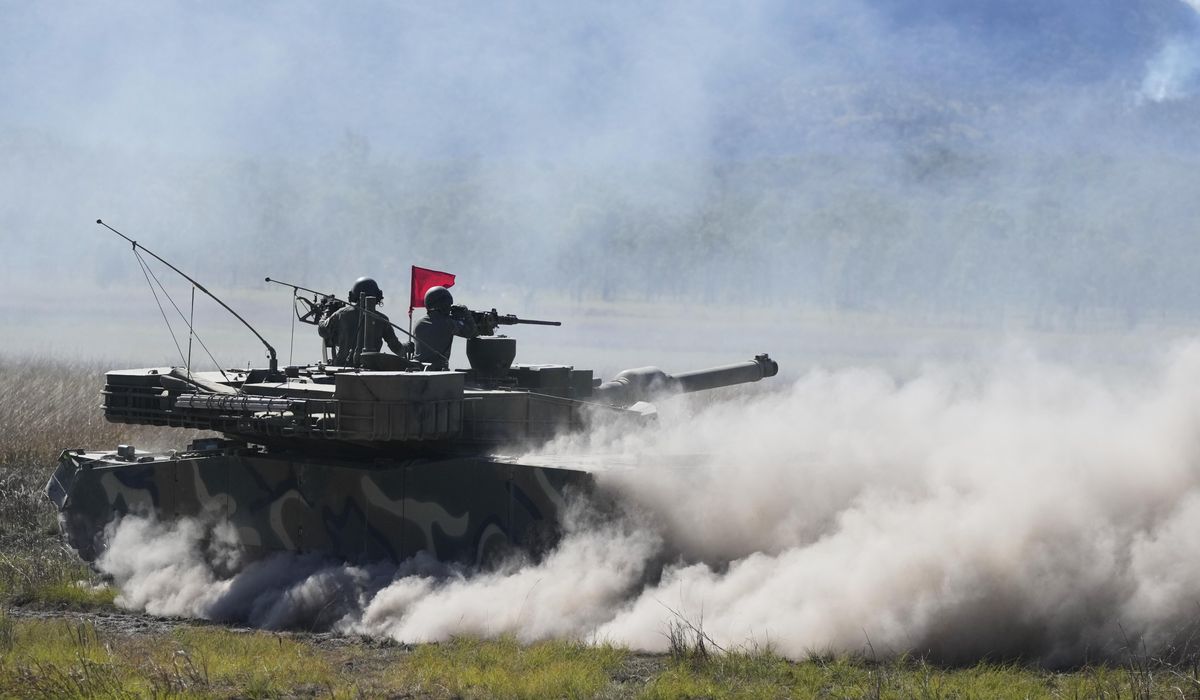


SEOUL, South Korea — Upcoming Ulchi Freedom Shield 25 exercises in South Korea earned a rebuke from Pyongyang, but future iterations of the war games may be facing threats from another direction: Washington.
With the Trump administration seeking to “modernize” the two countries’ bilateral alliance, U.S. forces on the peninsula may change in both size and role.
The annual late-summer military drills, which kick off next week, routinely draw condemnation from North Korea. 2025 was no different.
“We strongly condemn the U.S.-South Korea provocative actions and sternly warn of the negative consequences that will follow,” warned an editorial in the party newspaper the Rodong Shinmun, monitored by in Seoul by South Korean media.
However the rhetoric was mild by past standards.
The comments drew a response from one of two briefers from Combined Forces Command, or CFC, who met with foreign reporters in Seoul on the same day.
“All militaries train – North Korea trains!” he said, adding, “The North Korean statement is very normal….it is actually pretty tame by historical norms.”
CFC is the U.S.-led joint command element that would lead both South Korean and U.S. forces in the event of war.
The upcoming exercises, incorporating 44 separate segments, are being divided into two phases, each of 22. The first phase, computer-stimulated command post drills, will be followed by a field training phase.
The unusual delay in the field exercises is due to heavy summer flooding of ranges and training sites in South Korea, said one of the briefers, who clarified that the drills are “being rescheduled, not cancelled.”
The drills involve some 21,000 troops from South Korea, the U.S. and likely small contingents from the United Nations Command, the coordinating body for the free-world forces that defended Korea, under U.S. leadership, during the 1950-53 Korean War.
The briefers declined to state what kind of U.S. assets and personnel are deploying from off-peninsula to join the exercises - if any.
In the past, at times of tensions, assets deployed to Korea have included nuclear-capable aircraft, submarines and even men from SEAL Team 6, the unit that killed al Qaeda leader Osama Bin Laden.
Localized elements will also be involved — including as many as 580,000 South Korean civil servants, briefers said.
The non-military segments of the drills customarily involve civil defense and resilience drills.
Bigger questions hang over the future of the alliance than over the imminent drills. While CFC briefers declined to address them, the senior U.S. soldier in Korea did so in a press conference with Korean defense journalists last week.
“Alliance modernization is a rational look by two great militaries to say: How might we do this differently to deal with the operating environment that we find ourselves in now, which is different than any other time in history?” U.S. Commander in Chief of U.S. Forces Korea Gen. Xavier Brunson said, per a press statement released by his office Monday.
Regional context has markedly changed since the two capitals signed their alliance in 1953. The general noted a nuclear-armed adversary north of the border, increasing Russian involvement with North Korea and Chinese threats to a free and open Indo-Pacific.
“Alliance modernization” may get an airing at a long-awaited bilateral summit.
Mr. Trump said in a social media post on July 31 that he would be meeting South Korean President Lee Jae-myung, who won office in June, within two weeks.
With Mr. Trump deeply engaged in Russia-Ukraine diplomacy at present, that deadline looks questionable. Unconfirmed rumors among the Seoul commentariat suggest Aug. 25.
When Mr. Lee and Mr. Trump sit down, the future of the alliance is expected to share at least equal billing with economic matters, such as U.S. tariffs on Korean goods, a $350 million Korean investment fund and related reciprocities.
Several issues may be tabled.
One is “burden sharing” – the issue of how much South Korea pays for U.S. troop presence on its soil. Mr. Trump, in his first term, raised that price, and that was followed by a deal under his successor in 2024.
Perhaps the most divisive issue the allies face, however, is “strategic flexibility” - code for using U.S. assets on the peninsula in regional crises.
That could mean operations against Chinese forces in the South China Sea, the East China Sea, or around Taiwan, potentially dragging South Korea into conflict.
The Lee administration, while vowing to maintain the U.S. alliance, has repeatedly made clear its interest in maximizing cordiality in Beijing relations.
Seoul’s political stance clashes with some in the Pentagon, where influential figures, notably Under Secretary of Defense Eldridge Colby, see U.S. forces taking an increasingly China-facing role, making North Korea a distant priority.
If the allies cannot agree on related protocols, there are expectations that the approximately 28,000-strong USFK will shrink, even if the 1953 mutual defense treaty that binds Seoul and Washington together remains in place.
• Andrew Salmon can be reached at asalmon@washingtontimes.com.
